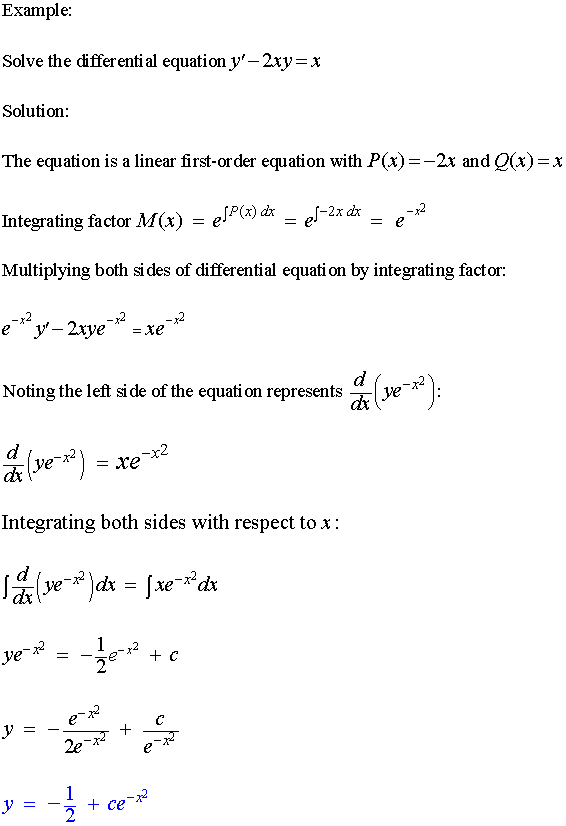

In physics, for example, a differential equation may model the motion of a particle in a given force field. Applications of Differential Equationsĭifferential equations arise in many scientific disciplines, including physics, chemistry, biology, and engineering. The order of a differential equation is the order of the highest derivative in the equation. In other words, the equation can be written in the form Linear Differential EquationĪ linear differential equation is an equation in which the highest-order derivative is a linear function of the independent variable. In many cases, numerical methods must be used to approximate the solutions. A first-order PDE involves one variable, a second-order PDE involves two variables, and so on.Ī major challenge in solving PDEs is that they can be extremely difficult to solve analytically. The order of a PDE is the number of variables involved in the equation. PDEs are commonly expressed in terms of partial derivatives of the variables with respect to space or time. They can be used to model the behavior of physical systems in a wide range of scientific and engineering applications. PDEs arise in many areas of physics and engineering, including fluid dynamics, elasticity, magnetism, and heat transfer. Partial Differential EquationsĪ partial differential equation (PDE) is a mathematical equation that relates the rates of change of several variables in different parts of a space or physical system. Is nonhomogeneous because the term is a derivative of. In other words, a nonhomogeneous equation is an equation that includes a derivative of a variable other than the independent variable. Nonhomogeneous Differential EquationĪ differential equation is said to be nonhomogeneous if it contains a term that is not a function of the independent variable. This equation is true for all values of $ y $. Homogeneous Differential EquationĪ differential equation is said to be homogeneous if the derivatives of all the variables in the equation are equal.įor example, the following equation is homogeneous: Once a solution is found, it can be used to predict the behavior of the system over time.

ODEs can be solved using a variety of methods, including graphical analysis, numerical methods, and the Laplace transform. Finally, each equation includes an initial condition, which is a statement of the value of the variables at some specific point in time. The equation also includes a number of derivatives, which are the rates of change of the variables. Each equation typically has a number of variables, which can be either constants or functions of time. There are many different types of ODEs, but all share a few common features. ODEs are used to model the change in a physical quantity over time.

Ordinary Differential EquationsĪn Ordinary Differential Equation (ODE) is a mathematical equation that relates a function and its derivatives. Exact equations can be solved using calculus techniques. Separable equations can be solved by separating the variables and integrating. Linear equations are the simplest type of differential equation, and they can be solved using basic algebra. Some of the most common types of differential equations include linear equations, separable equations, and exact equations. There are many different types of differential equations, each with its own unique application.

Types of Differential Equations Application


 0 kommentar(er)
0 kommentar(er)
